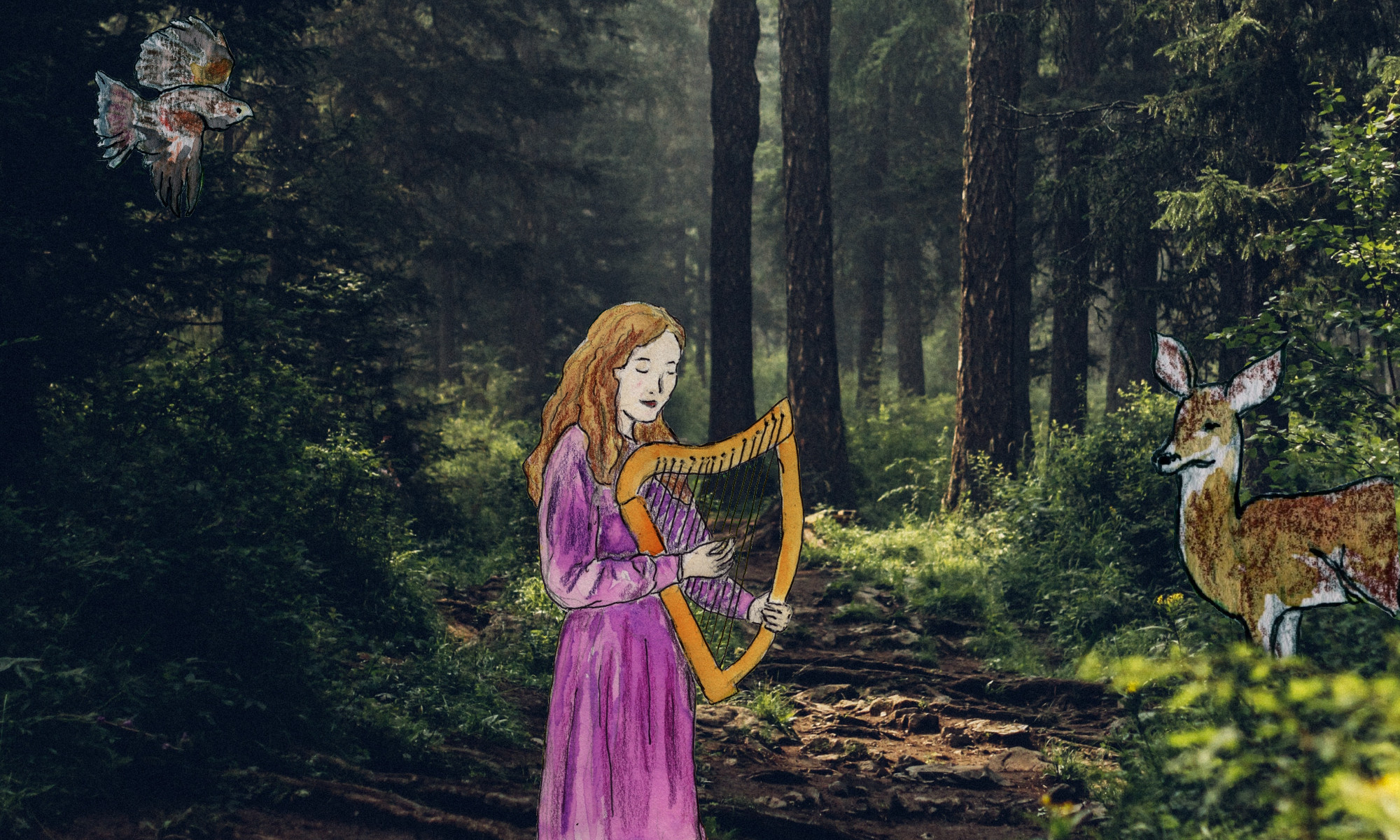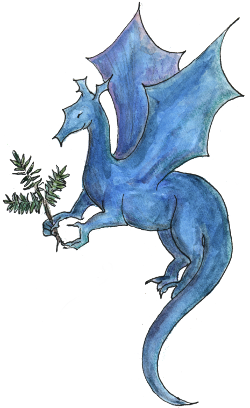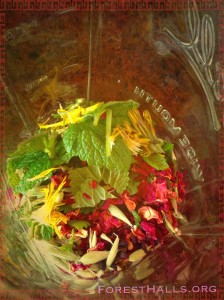
In the above photo, my plant friends and I have created a “brew that is true” (if I may randomly quote from the Danny Kaye classic movie, The Court Jester) — an infusion of real magic just for you. Be warned! You’ll need to drink with your imagination. But that is no large task when you allow yourself to ease into the enchantment that is the timeless and time-honored relationship that plants and us human folk share. If you are ready to taste this manner of story and song, read on!
A quick note about infusions
A nourishing infusion is a brew of herbs that has steeped for 1-4 or more hours (depending on plant parts used) to extract plant constituents to make a restorative, extremely healthful, almost food-like beverage. The infusion I’ve started above is a mix of flowers (which I would normally only infuse for up to an hour), leaves and ripening seeds (which I would infuse for at least 4 hours). Usually you use dried herbs (though I use fresh Lemon Balm leaves above).
Typically, one puts an oz. of dried herbs in a quart jar, and pours just-boiled water on top. Then you let it sit for 4-8 hours, strain out (pressing the “marc” — the plant material — to get the full nutritional benefits), and drink throughout the day.
A lot of info exists about making infusions. Here’s a great article by herbalist Rosalee de la Foret to really get you going. The point about infusions that I want to make right now is that infusions nourish you on all levels of your being. The plants offer nutrition and help balance your whole body — that includes our mind and spirit too!
In our “imaginative infusion” we’ll dip into a spirit way of experiencing the plants.
Wandering With The Plants
In a nourishing infusion, tea, extract, food, or other creation ,the plants talk with our bodies and wander with our spirits. In an imaginative infusion, we don’t have that physical communication, alas! Still, I hope to give you a taste of some lovely plants with whom we human folk have had a long-standing relationship. Here are the ones included in the brew above.
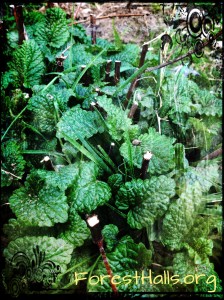
Lemon Balm (Melissa officinalis) – a lemony aromatic herb that gently guides you into “Quiet Mind”. Quiet Mind is the restful and receptive state of being in which our senses and hearts are open and softly curious. Included in our plant magic infusion we have her glossy green leaves.
Leaves in any plant are about communication and about intermingling — as they take in sunlight and transform it into the body of the plant. I invite you to entertain the notion that leaves have the active ability to interweave heaven and earth. They do this physically in our outer world, and, when ingested, smelled, or welcomed in any way, in our internal world.
When you taste a leaf, you ingest transformed sunlight (and minerals from the soil, and so on) by way of the unique nature of the plant you’re enjoying. So, a communication is taking place. When you work with the leaves of a plant, you can invite that solar — even stellar — aspect of reality into your being. Tend this idea with your imagination. That intermingling is happening within you as you read and ponder!
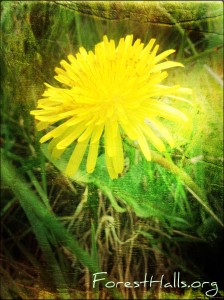
Dandelion (Taraxacum officinale) – that boisterous, cheerful herb that will keep you company wherever you are. The sunbright flowers offer you a dash of courage and fun. Flowers on a plant represent their highest spiritual expression, and Dandelion’s expression is that of the sun and a bold sense of self.
So, enjoy those Dandy flowers! Cook with them (they are edible), throw them on salads, toss them into stir fries, make Dandelion flower fritters. Take courage with Dandelion, and take good cheer. Be creative with Dandy, and be your kid self. Allow Dandelion to help you bust through whatever seems like impermeable pavement in your life. As you (no doubt) well know, Dandelion is at home and herself wherever she is.
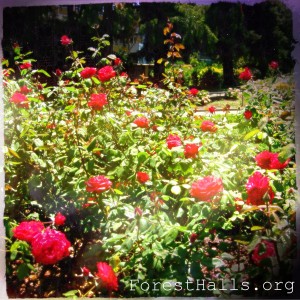
The red-pink petals are Red Rose (Rosa gallica). Who doesn’t love Rose? Rose offers deep love, a wicked protective grace (think of her thorns), and helps to ease trauma and grief. I feel I really don’t have to introduce you to Rose! Just go find a Rose plant and sit beside it. Soak in the beauty of Rose, and drink up the intoxicating heart-sweet scent. Be brave: touch a thorn!
All of Rose is good medicine. When we touch the thorns (or when they grab hold of us) we are reminded that even our “thorns” are medicine too. Rose helps us embrace the gifts of our whole nature, sourced from both wounds and blessings.
Milky Oat Tops (Avena sativa). Oats as a whole plant are a true Mother Earth food and medicine. Oat Straw and Oat Tops nourishing infusions are mineral rich, a source of magnesium and easily absorbed calcium and more. Milky Oat Tops — the ripening seed full of “milky” fluid — are particularly beneficial to those who are exhausted and feel absolutely depleted in just about all ways. Here’s a link to an article by herbalist Kiva Rose about Milky Oat Tops. For a Milky Oat medicine song and more musing on Milky Oats head over to my video and post here.
For our imaginative infusion, let’s focus now on experiencing the deep rest of the earth, the comfort of the mother, the possibility that replenishment of our deepest nature is here for us, rebuilding and restoring us from the inside out. If it’s possible for you, go outside right now and lie down on the ground (feel free to lay a blanket down first). Allow yourself to enter the timeless realm — the eternal moment — and feel the length of your body supported by this expansive ground that is the whole world.
Can’t do this physically? Then drink of this experience with your imagination! See if you can smell the earth, feel the terrain, hear the bird song or breeze. What, if anything, changes for you when you rest into the earth and ocean of your being?
The above is just a short inspirational wander with the plants, but hopefully this brief infusion stirs your senses and awakens you to the possible in your own relationship to the plant world. These green folk engage in so many ways with our lives, nourishing our breath and body via landscapes that include the terrain of myth and soul as well as our emotional and physical spaces. How do you taste and experience the gifts plants have for you in your many-layered reality? Please share your stories in the comment box below!
